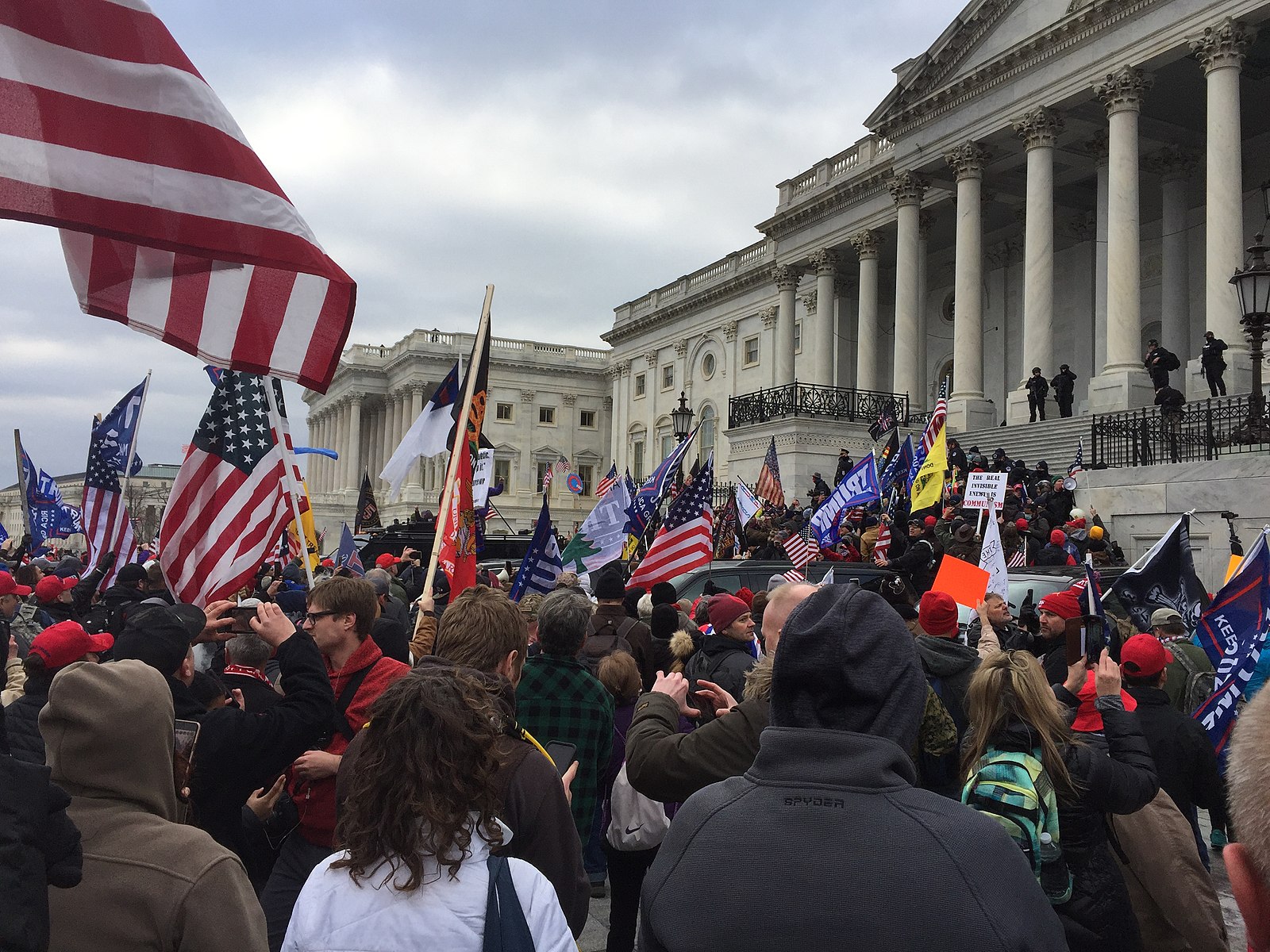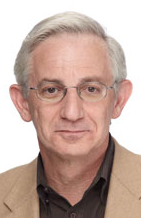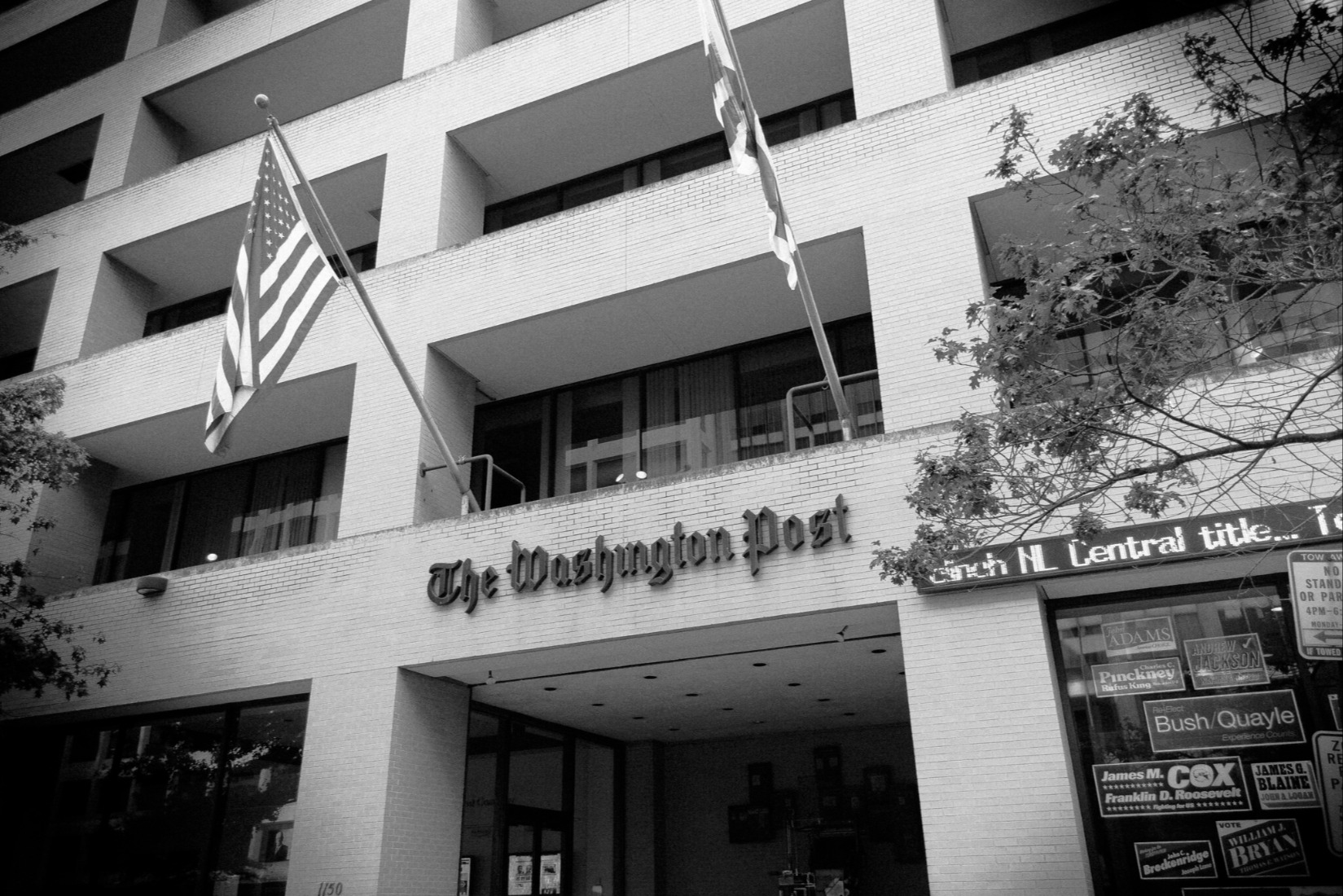The Justice Department Faces a Setback in the Capitol Riot Cases
A U.S. District judge dismissed the felony charge that has become the single most important weapon in the government’s arsenal in Capitol insurrection cases.

Published by The Lawfare Institute
in Cooperation With

On March 7, a federal judge finally did what many analysts had long—and queasily—feared.
U.S. District Judge Carl J. Nichols, ruling in the case of Jan. 6 insurrection defendant Garret Miller, dismissed the felony charge that has become the single most important weapon in the government’s arsenal in Capitol insurrection cases. In essence, he found that the government could not use the charge the way it has, in fact, used it against more than 280 defendants.
A phalanx of ten other judges on the same court, the U.S. District Court for the District of Columbia, had previously ruled the other way, blessing the government’s use of the same charge under nearly identical circumstances.
The charge in question is “corruptly obstructing an official proceeding” under 18 U.S.C. §1512(c)(2), which carries a maximum penalty of 20 years imprisonment. (I’ve written about it before, here and here.) It’s a charge that prosecutors have leveled in more than 280 of the more than 750 Capitol riot cases they have brought in federal court to date—almost 40 percent of the total.
The government theory in these cases, including Miller’s, is that the rioters, with “corrupt” intent, stormed the Capitol in an effort to, in the statute’s language, “obstruct[], influence[], or impede[]” the joint session of Congress that was then tasked with counting Electoral College votes, as required under the Twelfth Amendment and the Electoral Count Act.
But Nichols ruled that that the law doesn’t cover such conduct. Rather, he concluded, when viewed in context, the paragraph’s seemingly broad language has to be read very narrowly. The law actually forbids only those obstructions of official proceedings, he wrote, in which a defendant has “taken some action with respect to a document, record, or other object”—like, for instance, “cover[ing] up, falsif[ying], or mak[ing] a false entry in a record.” In other words, he ruled that the provision is, like many of its neighboring paragraphs in the U.S. Code, about spoliation of evidence—not about riots or insurrections.
Is Nichols’s ruling a risible outlier that no one needs to take seriously? Unfortunately for those of us eager to see robust criminal prosecutions of the Capitol rioters, it is not. His reasoning is at least plausible and aspects of his ruling are crafted in ways that could well find favor with certain justices on the U.S. Supreme Court, should the issue get that far.
At the same time, Nichols’s ruling is hardly dispositive.It follows a somewhat tortured path to reach a nonintuitive result given the plain text of the law. His reasoning has also been rejected not just by ten of his colleagues, but also, as he acknowledged, by the U.S. Circuit Court of Appeals for the Eighth Circuit in a non-Capitol riot case.
Defendant Miller, of Dallas County, Texas, still faces 11 other charges, including five felonies, so it’s unclear whether the department will appeal Nichols’s ruling. His ruling does not bind the other judges on the court any more than their rulings on the subject bind Judge Nichols. A Justice Department spokesperson declined comment.
In addition to allegedly storming and penetrating the Capitol, Miller allegedly impeded two federal police officers during a civil disorder, assaulted a third, and committed two “interstate threats.” The latter refer to his having tweeted “Assassinate AOC,” in reference to Rep. Alexandra Ocasio-Cortez, and having written on social media, “We’re going to get ahold of [the officer who shot Ashli Babbitt] and hug his neck with a nice rope.”
But the issue will certainly reach the U.S. Court of Appeals for the D.C. Circuit sooner or later. If the government doesn’t appeal now, then some convicted defendant will appeal soon enough—like, say, Texas Three Percenter Guy Reffitt, whom a jury found guilty of that offense, among others, on Mar. 8.
“It would seem wise” for the government to appeal Nichols’s ruling, says Barbara McQuade in an email, “to get a clear legal ruling from the D.C. Circuit and perhaps the Supreme Court before going further in using this charge against other defendants.” McQuade is a professor at the University of Michigan and a past U.S. Attorney for the Eastern District of Michigan.
The stakes could not be higher. Section 1512(c)(2) is the top charge in most Capitol riot felony cases—that is, the one carrying the stiffest potential penalty. It’s also the sole charge that a number of celebrated Capitol riot defendants have already pleaded guilty to, including the so-called QAnon Shaman Jacob Chansley; Olympic swimmer Klete Keller; and four of the five the Oath Keepers who have agreed to cooperate against their erstwhile codefendants. Those Oath Keepers—Mark Grods, Jason Dolan, Graydon Young, and Caleb Berry—pleaded guilty to both 1512(c)(2) and conspiracyto violate that section, but the conspiracy charges could not stand if the underlying crime were to evaporate.
Last, but hardly least, Section 1512(c)(2) is also one of the two felonies that President Trump likely violated, according to a civil case brief filed on Mar. 2 by the Select House Committee on the Jan. 6 Attack on the Capitol. (See “Now Will the Justice Department Investigate Trump?”) It’s also one of the two felonies that, a month earlier, former U.S. Attorney McQuade argued that Trump violated in a much-discussed “model prosecution memo” published in Just Security.
So what precisely is the question on which Judge Nichols differs from his colleagues?
The paragraph containing the specific statutory language in question, paragraph (c), was added to an already existing §1512 as part of the Sarbanes-Oxley Act of 2002. Congress passed that law in the wake of Enron’s collapse and with an eye to—at least in part—plugging certain loopholes in existing obstruction-of-justice laws that were frustrating the enforcement of financial crimes.
When prosecutors first began using §1512(c)(2) to prosecute Capitol rioters, the tactic immediately raised eyebrows. Everyone knew the financial provenance of the provision in the Sarbanes-Oxley legislation, and many analysts noticed the seemingly inapt title of the umbrella section (§1512) into which the new paragraph had been inserted: "Tampering with a witness, victim or an informant.”
Last August and September—before lawyers had filed any briefs on these issues—two district judges handling Capitol riot cases, Randolph D. Moss and Amit Mehta, expressed concerns about the charge from the bench. They mused in particular about whether its intent element, “corruptly,” might be too vague and whether there was any “limiting principle” that would keep the provision from being applied too broadly.
After full briefing, however, prosecutors succeeded in allaying most judges’ qualms. The first to greenlight use of the charge, on Dec. 10, was Judge Dabney Friedrich, a Trump appointee. (See “Government Wins Key Ruling on Issue Affecting Hundreds of Capitol Riot Cases.”) Nine other judges appointed by presidents of both parties soon followed suit, with seven offering independent, in-depth analyses. In order, they were Judges Mehta; Moss; James E. Boasberg; Timothy J. Kelly; Chief Judge Beryl Howell (orally, commemorated in a minute entry); John D. Bates; Colleen Kollar-Kotelly; Richard Leon (minute entry); and Christopher Cooper. On Mar. 8, an eleventh judge, Rudolph Contreras, said from the bench that he, too, will soon issue a written ruling denying a motion to dismiss that charge. Of those eleven judges, five were appointed by Republican presidents, including three by Trump.
Nichols, too, is a Trump-appointee. His previous rulings in Jan. 6 cases have not marked him as a particular outlier on the court. (See “Are Judges Showing Their Political Colors in the Jan. 6 Criminal Cases?”) (Journalist Marcy Wheeler has compiled a complete list of the § 1512(c)(2) rulings on her blog, Emptywheel.)
How and Why Did Judge Nichols Reach a Different Result?
Here’s the paragraph of §1512 that’s at issue:
(c) Whoever corruptly—
(1) alters, destroys, mutilates, or conceals a record, document, or other object, or attempts to do so, with intent to impair the object’s integrity or availability for use in an official proceeding; or
(2) otherwise obstructs, influences, or impedes any official proceeding, or attempts to do so, shall be fined under this title or imprisoned not more than 20 years, or both.[emphasis added]
In interpreting this language, Judge Nichols homes in on the word otherwise in clause (c)(2). Depending on how one interpreted that word, he writes, “three readings of the statute are possible, and two are plausible.” Each of his readings hinges on what the word otherwise connoted about the relationship between subsections (c)(2) and (c)(1).
The first possible reading, he suggests, is to view otherwise as creating “a clean break between subsections”—that is, “there would be no relationship between subsections (c)(1) and (c)(2) at all.” This reading would support the government’s broad reading of subsection (c)(2). But Nichols quickly rejects that approach, arguing that it would be simply ignoring the word otherwise altogether, rendering it “pure surplusage.”
The second possible reading is “that subsection (c)(1) contains specific examples of conduct that is unlawful under subsection (c)(2).” This reading would also generate a reading that would support the government’s broad reading of subsection (c)(2). This reading is preferable to the first in that it assigns the word otherwise a function: tethering the two clauses together.
But while Nichols acknowledges that this reading is “quite plausible,” he finds that it also suffers from “other problems.”
To say that the text of § 1512(c)(1) provides merely examples of crimes that fit within § 1512(c)(2)’s scope is to say that the principal (indeed, only) criminal offense in subsection (c) is listed in its second subsection. That turns expectation on its head and is, at the very least, not how a reasonable reader would expect a statute to be organized—a flaw when talking about any statute, but especially a criminal one.
The third possible reading, in Nichols’s view, was that “[s]ubsection (c)(2) is a residual clause for subsection (c)(1).” By this, he meant that the word otherwise would still “link the two subsections, but the link or commonality is found in the conduct prescribed by subsection (c)(1).” Under this reading, subsection (c)(2) would only apply to conduct that amounted to, in some fashion, “similar crimes” to those listed in subsection (c)(1). For instance, there are other ways that a defendant could conceivably act upon a “record, document, or tangible object” besides “alter[ing], destroy[ing], mutilate[ing], or conceal[ing] one”—the specific acts listed in subsection (c)(1). One could, for instance, “cover[] up, falsif[y], or make a false entry in any record, document, or tangible object,” Nichols wrote. Those latter, residual crimes would be covered by subsection (c)(2) under this third possible reading, Nichols wrote.
While Nichols’s third reading might seem like a strangely crabbed reading of very broad language, Nichols maintains that it is the reading that best mirrors a 2008 Supreme Court precedent. That case, Begay v. United States, also revolved around the meaning of the word otherwise. There the Court was trying to determine whether “driving under the influence” should be considered “a violent felony” for purposes of the Armed Career Criminal Act. (That act imposes a mandatory 15-year prison term upon those who unlawfully possess a firearm and have three prior convictions for certain crimes, including a “violent felony.”) That statute defines a violent felony as one that “is burglary, arson, or extortion, involves use of explosives, or otherwise involves conduct that presents a serious potential risk of physical injury to another.” (Emphasis added.)
In Begay, the five-justice majority found that DUI did not constitute a violent felony. Justice Breyer (joined by Justices Stevens, Kennedy, Ginsburg, and Chief Justice Roberts) wrote that
the provision’s listed examples—burglary, arson, extortion, or crimes involving the use of explosives—illustrate the kinds of crimes that fall within the statute’s scope. Their presence indicates that the statute covers only similar crimes, rather than every crime that “presents a serious potential risk of physical injury to another.”
Judge Nichols concludes that the majority ruling in Begay supports his “third” possible reading of § 1512(c)(2). (Justice Scalia concurred in the Begay result, while Justices Alito, Thomas, and Souter dissented.)
Other Readings of Begay
Most of Nichols’s fellow judges who discussed Begay at all in their rulings—and some didn’t—gave it short shrift. Of those who did, Randolph Moss may have devoted the most attention to it. He noted, to begin with, that:
Begay’s discussion of the word “otherwise” is remarkably agnostic. The Supreme Court merely observed that “the word ‘otherwise’ can (we do not say must) refer to a crime that is similar to the listed examples in some respects but different in others.”
Moss construed the word “otherwise” in §1512(c)(2) to mean “in a different way or manner,” and then read the two subsections as follows:
The plain text of Section 1512(c)(1) targets the alteration of evidence “with the intent to impair the object’s integrity or availability for use in an official proceeding.” . . . In contrast, Section 1512(c)(2) takes aim at the obstruction of the official proceeding itself. In other words, while the official proceeding is the indirect object of the intent requirement in Section 1512(c)(1), it is the direct object of the conduct at issue in Section 1512(c)(2). And although cases will undoubtedly arise that could be brought under either or both prongs of Section 1512(c), substantial “overlap between . . . two clauses . . . is not uncommon in criminal statutes,” Loughrin v. United States, 573 U.S. 351, 358 n.4 (2014). [Emphasis in the original.]
Finally, Moss found the reading of the law that Judge Nichols later adopted—which the defendants before Moss were then urging—implausible:
[I]t would have been easy for Congress to craft language to achieve the goal that Defendants now hypothesize. Congress, for example, could have substituted Section 1512(c)(2) with the following: “engages in conduct that otherwise impairs the integrity or availability of evidence or testimony for use in an official proceeding.” The fact that Congress, instead, enacted language that more generally—and without the limitations that Defendants now ask the Court to adopt—criminalized efforts corruptly to obstruct official proceedings speaks volume.
In his own ruling, Nichols acknowledges the force of Judge Moss’s argument. What Moss wrote is “certainly true,” Nichols conceded, and that’s why Nichols does “not believe that there is a single obvious interpretation of the statute.”
So Nichols pivots at that crucial juncture in his analysis. He declares the statute ambiguous, because he finds both his second and third readings of it to be plausible. Having done so, he turns to what are, for him, the tie-breakers: two related principles concerning the interpretation of criminal statutes.
One is the notion that “federal courts have ‘traditionally exercised restraint in assessing the reach of a federal criminal statute.’ United States v. Aguilar, 515 U.S. 593, 600 (1995).”
The Supreme Court has urged this restraint “both out of deference to the prerogatives of Congress and out of concern that ‘a fair warning should be given to the world in language that the common world will understand, of what the law intends to do if a certain line is passed.’”
The second and “parallel” notion that Nichols cites is the “rule of lenity.” Under that principle, “courts construe penal laws strictly and resolve ambiguities in favor of the defendant.”
“Under current doctrine,” Nichols concedes, judges are only supposed to invoke the rule of lenity in cases of “grievous” ambiguity. Nevertheless, he suggests that that standard may be overly demanding and that the Court may be evolving toward using the rule of lenity more readily.
For this last notion—that “grievous” ambiguity is no longer required to trigger the rule of lenity—he cites Justice Gorsuch’s concurrence in another Supreme Court case interpreting the Armed Career Criminal Act. That ruling, Wooden v. United States, came down only a few hours before Nichols issued his own ruling incorporating it. In Wooden, Gorsuch wrote a 14-page plea for broader use of the rule of lenity. But while Justice Sotomayor joined portions of Gorsuch’s concurrence—that’s all it was: a concurrence. The seven other justices were unimpressed.
The Upshot
So where does all of this leave the Jan. 6 investigation? Will Judge Nichols’s one-two punch—a labored interpretation of the word otherwise combined with hair-trigger application of the rule of lenity—spell disaster for the government’s approach to the Capitol riot cases?
It’s hard to imagine Nichols’s argument carrying the day at the Court of Appeals level. But if the issue reaches the Supreme Court, all bets are off. Trying to count heads on the issues presented by this case is quite challenging. The Begay Court split along confusing, non-ideological lines. Nor is it clear how its teachings map onto the issues posed by §1512(c)(2). As for the rule of lenity, there appear to be only two strong advocates for expanding its use and they are, again, strange ideological bedfellows: Justices Gorsuch and Sotomayor.
And that’s just looking at the case doctrinally. Supreme Court rulings are often subject to a subconscious jurisprudence that can threaten to overwhelm the conscious one. For some justices, the prospect of throwing a wrench into the largest federal investigation in history—one targeting perpetrators of a violent assault on our democracy—would be close to unthinkable. Yet other justices might be battling very different impulses.





